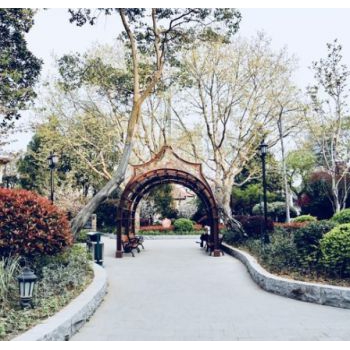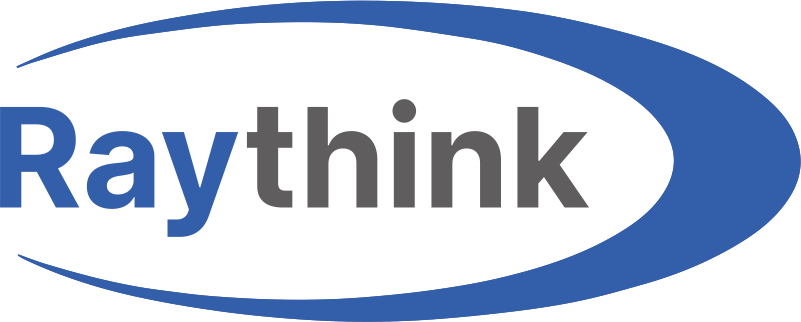百欧林简报- KSV NIMA LB膜分析仪ZX文献-2020年第10期
1. Name:The Effect of Cholesterol on Membrane Binding and Self-Assembly of Collagen Fibrils
Authors:Minh Dinh Phan, Keel Yong Lee, Jumi Lee, Sushil K. Satija and Kwanwoo Shin
Journal:Langmuir
DOI: 10.1021/acs.langmuir.0c00574
Abstract:Collagen is a skeleton of the native extracellular matrix (ECM) that is known to provide mechanical and structural stability. In an attempt to develop a new connective cellular model with the surrounding ECM without further experimental complications, such as the reconstitution of ECM receptors, we designed the experiments and discovered that the fibrillogenesis of membrane-bound collagen is not spontaneous as it is in the form of free collagen in bulk solution. The confocal microscopic results suggest that cholesterol is a crucial component that facilitates the fibril formation on the membrane surface. In situ X-ray and neutron reflectivity on Langmuir monolayer and solid-supported lipid bilayer models, respectively, reveal two features of cholesterol effects on the collagen fibril formation. Mainly, cholesterol increases the lateral lipid headgroup separation on the membrane surface, which promotes the association degree of collagen monomers. It also enhances the elastic modulus of the membrane to impede membrane filtration by the collagen assemblies.
Link:https://pubs.acs.org/doi/abs/10.1021/acs.langmuir.0c00574
2. Name:Universal Interfacial Control through Polymeric Nanomosaic Coating for Block Copolymer Nanopatterning
Authors:Dong Hyup Kim and So Youn Kim
Journal:ACS Nano
DOI: 10.1021/acsnano.0c01957
Abstract:The employment of self-assembly of soft materials has been accepted as an inexpensive, robust, and reliable patterning method. As their self-assembly relies on the delicate molecular interactions near the substrate, a precise prediction/control of the interface structure and dynamics is critical to achieve desired nanostructures. Herein, a polymeric nanomosaic (PNM) pattern is created from the air/water interfacial self-assembly of a block copolymer (BCP) and introduced as an effective interfacial energy control for substrates. As a demonstration, the PNM coating is employed to control the BCP film structures. The perpendicular orientation of BCP self-assembly, which requires neutral wetting conditions for both blocks, is difficult to achieve, but can readily be obtained with the PNM coating upon a fine resolution of the pattern quality. The universal applicability of the PNM coating as an interfacial control has been confirmed on curved, flexible, and three-dimensi.onal substrates. In addition, the PNM is introduced as an etching-free and reusable topcoat imparting free surface neutralization even for the high-chi BCP nanopatterning
Link:https://pubs.acs.org/doi/abs/10.1021/acsnano.0c01957
3. Name:Anisotropic energy transfer in the clay-porphyrin layered system with environment-responsiveness
Authors:Haruka Nishina, Shota Hoshino, Yuta Ohtani, Tamao Ishida, Tetsuya Shimada and Shinsuke Takagi
Journal:Physical Chemistry Chemical Physics
DOI: 10.1039/D0CP02263B
Abstract:The adsorption orientation behavior of tetrakis(1-methylpyridinium-3-yl) porphyrin (m-TMPyP) and tetrakis(1-methylpyridinium-4-yl) porphyrin (p-TMPyP) on the clay monolayer prepared by Langmuir Blodgett (LB) technique was observed by absorption and dichroic spectra on waveguide. It was revealed that the orientation of m-TMPyP and p-TMPyP on the clay monolayer, that is parallel and tilted respect to the clay surface, depends on the surrounding environment such as water and N, N-dimethylformamide (DMF). The anisotropic photochemical energy transfer between m-TMPyP as a donor and p-TMPyP as an acceptor in the layered system was investigated in water and in DMF-water (9/1(v/v)) by a fluorescence observation. As a result, while energy transfer efficiency (ηET) was 60% for parallel-parallel orientation in water, that was 10% for tilted-tilted orientation in DMF-water (9/1(v/v)). The major factor for the change of ηET could be a change of distance between m-TMPyP and p-TMPyP, and J value that is a parameter for spectral overlap between energy donor’s fluorescence and acceptor’s absorption.
Link:https://pubs.rsc.org/en/content/articlelanding/2020/cp/d0cp02263b/unauth#!divAbstract
4. Name:Terpene-based ionic liquids from natural renewable sources as selective agents in antifungal therapy
Authors:Joanna Feder-Kubis, Anita Wnętrzak and Anna Chachaj-Brekiesz
Journal:ACS Biomaterials-Science & Engineering
DOI: 10.1021/acsbiomaterials.0c00447
Abstract:In this study, we present a new approach toward the design of ionic liquids with biological activity. Structural analysis of bioactive compounds was performed to design—in a technological and economic manner—salts with potential antifungal properties. The length of the alkyl chain, as well as the task-specific component in the cation, the type of amine core, and the type of anion, were considered as having an essential impact on achieving desired biological activity. Herein, we present the synthesis and characterisation of ionic liquids based on monoterpene derivatives—namely, (1R,2S,5R)-(–)-menthol or bicyclic (1R)-endo-(+)-fenchol—from renewable sources. These new salts were synthesized with high yields (>96%) in mild conditions via a two-step procedure. Physicochemical properties (i.e., melting point, thermal stability, crystal shape, specific rotation, surfactant content, solubility, and surface activity) were analysed in detail. The obtained results suggested the influence of the steric hindrance of the discussed salts on the reactivity, solubility, thermal stability, and surface properties of the studied compounds. Their potential selectivity in antifungal therapy was studied using a Langmuir monolayer mimicking fungal (ergosterol) and mammalian (cholesterol) membranes. The model study confirmed the selective destabilizing activity of terpene-based ionic liquids on the fungus membrane.
Link:https://pubs.acs.org/doi/abs/10.1021/acsbiomaterials.0c00447
5. Name:A Highly Selective Metal-Organic Framework Textile Humidity Sensor
Authors:Sakandar Rauf, Mani Teja Vijjapu, Miguel Angel Andres, Ignacio Gascón, Olivier Roubeau, Mohamed Eddaoudi and Khaled Nabil Salama
Journal:ACS Appl. Mater. Interfaces
DOI: 10.1021/acsami.0c07532
Abstract:The increase in demand and popularity of smart textiles brings new and innovative ideas to develop a diverse range of textile-based devices for our daily life applications. Smart textile-based sensors (TEX sensors) become attractive due to the potential to replace current solid-state sensor devices with flexible and wearable devices. We have developed a smart textile sensor for humidity detection using a metal-organic framework (MOF) as an active thin-film layer. We show for the first time, the use of the Langmuir-Blodgett (LB) technique for the deposition of a MIL-96(Al) MOF thin film directly onto the fabrics containing interdigitated textile electrodes for the fabrication of a highly selective humidity sensor. The humidity sensors were made from two different types of textiles, namely, linen and cotton, with the linen based sensor giving the best response due to better coverage of MOF. The TEX sensor showed a reproducible response after multiple cycles of measurements. After three weeks of storage, the sensor showed a moderate decrease in response. Moreover, TEX sensors showed a high level of selectivity for the detection of water vapors in the presence of several volatile organic compounds (VOCs). Interestingly, the selectivity is superior to some of the previously reported MOF coated solid-state interdigitated electrode devices and textile sensors. The method herein described is generic and can be extended to other textiles and coating materials for the detection of toxic gases and vapors.
Link:https://pubs.acs.org/doi/abs/10.1021/acsami.0c07532
6. Name:Construction of cell-plastics as neo-plastics consisted of cell-layer provided green alga Chlamydomonas reinhardtii covered by two-dimensional polymer
Authors:Akihito Nakanishi, Kohei Iritani, Yuri Sakihama, Nanami Ozawa, Ayano Mochizuki and Marina Watanabe
Journal:AMB Express
DOI: 10.1186/s13568-020-01046-y
Abstract:Green alga Chlamydomonas reinhardtii has gained interest as a sustainable resource because it can be easily grown using CO2 as a carbon source owing to its high CO2 assimilating activity. Although the robustness of the cell wall of C. reinhardtii makes it difficult to extract its intracellular products, such property is beneficial when using the cell as an ingredient to fabricate “cell-plastic” in this study. The cell layer, which is a component of the cell-plastic, was prepared with an intercellular filler to connect each cell because C. reinhardtii is a single-cell strain. The cell layers were then repeatedly piled to increase the strength of the cell-plastic. To avoid slippage between the cell layers, they were covered with a small amount of a two-dimensional polymer to maintain the flat surface structure of the cell-plastic. Based on the evaluation, the cell-plastic has the potential to be a novel, sustainable plastic using ubiquitous green algal cells in nature.
Link:https://link.springer.com/article/10.1186/s13568-020-01046-y
7. Name:Structural modifications of lipid membranes exposed to statins – Langmuir monolayer and PM-IRRAS study
Authors: Michalina Zaborowska, Marcin Broniatowski, Pawe łWydro, Dorota Matyszewska and Renata Bilewicz
Journal:Journal of Molecular Liquids
DOI: 10.1016/j.molliq.2020.113570
Abstract:The effects of selected statins on the structure and properties of lipid membranes composed of zwitterionic (1,2-dimyristoyl-sn-glycero-3-phosphocholine, DMPC, 1,2-dimyristoyl-sn-glycero-3-phosphoethanolamine, DMPE) or anionic (1,2-dimyristoyl-sn-glycero-3-phospho-l-serine, DMPS) lipids were studied for the first time by Langmuir technique combined with polarization modulation infrared reflection absorption spectroscopy (PM-IRRAS) and Brewster angle microscopy (BAM). The interactions of statins of different hydrophobicity: pravastatin, fluvastatin, and cerivastatin with the polar region of the lipids forming the membrane were monitored by PM-IRRAS and the changes of the overall monolayer structure and organization were described on the basis of surface pressure vs. area per molecule measurements and Brewster angle microscopy. Large differences in the action of each of the statins on the lipid monolayers were observed and explained by their different hydrophobicity combined with the different degree of hydration of the lipid polar headgroups in the monolayer. Monolayer fluidizing effect was connected with the interaction of statins in the headgroup region of the membrane affecting the original hydrogen bonding in the lipid layers. The most hydrophilic pravastatin interacted only with the polar head groups of the monolayer and affected the organization of the polar part of the lipid membrane by increasing the headgroups hydration. In the case of DMPS, the contribution of electrostatic interactions between the negatively charged headgroups and the drug was observed, and for this lipid especially strong dehydration effect of cerivastatin was revealed. It facilitated the incorporation of the hydrophobic part of the drug into the nonpolar region of the DMPS layer and in this case there was almost no fluidization of the layer. Strong dehydration effects may be dangerous for the lipid membranes and may also be one of the reasons to avoid cerivastatin in the therapies, despite its known efficacy especially in view of the large doses and prolonged application that are usually needed.
Link:https://www.sciencedirect.com/science/article/pii/S0167732220327379
8. Name:Interfacial Nanostructures and Photoelectric Properties in Self-Assembled Cholesterol Amide Derivative Langmuir–Blodgett Films
Authors:Min Li, You Yang, Ran Wang,Xudong Yu, Jianmin Gu, Yandi Rao, Jingjing Su, Jinghong Li and Tifeng Jiao
Journal:Integrated Ferroelectrics
DOI: 10.1080/10584587.2020.1728711
Abstract:Cholesterol is widely used in the field of amphiphilic self-assembly as a small organic molecular structural unit. In this article, new cholesterol amide derivative (CHAM) films via molecular self-assembly technology have been successfully prepared. Scanning electron microscope, transmission electron microscope, UV–Vis spectra, atomic force microscopy (AFM), contact angle and Fourier transform infrared spectroscopy were measured to characterize the morphology and nanostructure of the prepared self-assembled CHAM Langmuir–Blodgett (LB) films. The obtained experimental data revealed that different subphases played an important role in formation of a stable LB film, resulting in different assembly behavior. CHAM contains adamantane units and highly symmetrical tricyclic aliphatic hydrocarbon clusters, so it can combined with cyclodextrin through host–guest interact, for CHAM act as host and cyclodextrin containing a hydrophobic cavity act as guest. The morphology of single-layer Langmuir films with different subphases was characterized by AFM, indicating that the CHAM molecules formed a stable LB films on the surface of the pure water subphase, cyclodextrin subphase and cyclodextrin polymer subphase. The photoelectric properties were characterized by J-V characteristics, EIS response and impedance map, and it was found that the CHAM film had better photoelectric properties.
Link:https://www.tandfonline.com/doi/abs/10.1080/10584587.2020.1728711
9. Name:Ultra-small-size Astragaloside-IV loaded lipid nanocapsules eye drops for the effective management of dry age-related macular degeneration
Authors:Rong Sun, Anan Zhang, Ying Ge, Jingxin Gou, Tian Yin, Haibing He, Yanjiao Wang, Guimin Zhang, Jun Kong, Lixia Shang, Xiumei Tao, Yu Zhang and Xing Tang
Journal:Expert Opinion on Drug Delivery
DOI: 10.1080/17425247.2020.1783236
Abstract:Age-related macular degeneration (AMD) is a major cause of severe visual loss in elderly people. The treatments for dry AMD (dAMD) are severely limited so far. In this work, we aim to develop an eye drop to protect retinal functions against oxidative stress and apoptosis for improving dAMD management.
Link:https://www.tandfonline.com/doi/abs/10.1080/17425247.2020.1783236
10. Name:Post-combustion CO2 capture by coupling [emim] cation based ionic liquids with a membrane contactor; Pseudo-steady-state approach
Authors:Qazi Sohaib, Jose Manuel Vadillo, Lucía Gómez-Coma, Jonathan Albo, Stéphanie Druon-Bocquet, Angel Irabien and José Sanchez-Marcano
Journal:International Journal of Greenhouse Gas Control
DOI: 10.1016/j.ijggc.2020.103076
Abstract:This study demonstrates the coupling of Ionic liquids (ILs) with a membrane contactor for post-combustion CO2 capture at moderate pressures and temperatures. ILs 1-ethyl-3-methylimidazolium methyl sulfate([emim][MeSO4]), 1-ethyl-3-methylimidazolium dicyanamide([emim][DCA]), 1-ethyl-3-methylimidazolium ethyl sulfate([emim][EtSO4]) and 1-ethyl-3-methylimidazolium acetate ([emim][Ac]) were selected due to their high thermal stability, moderate viscosity and surface tension, as well as high CO2 solubility. No wetting conditions were confirmed for the polypropylene membrane by measuring contact angle, liquid entry pressure (LEP) and SEM of fiber surface before and after the operation. ILs were recirculated in the setup until reaching pseudo-steady-state. All four ILs were able to capture a substantial amount of CO2 during the specified operation time. Initially, very high values of CO2 mass transfer flux and experimental overall mass transfer coefficient were obtained which further decreased with operation time and reached a nearly constant value at pseudo-steady-state. Effect of CO2 loading of the ILs and temperature on enhancement factor and first order rate constant were evaluated. The absorption behavior and kinetics were strongly influenced by the CO2 concentration in the ILs, which divides the absorption process in two steps; an initial faster absorption at the gas-liquid interface and later slower absorption in the bulk of the IL. Finally, a pseudo-steady-state modelling approach was implemented and validated.
Link:https://www.sciencedirect.com/science/article/abs/pii/S175058362030116X
11. Name:Oriented wrinkle textures of free-standing graphene nanosheets: application as a high-performance lithium-ion battery anode
Authors:Hee-Sung Jeong, Jongsoon Kim, Kyoung-Il Jo, Jinho Kee, Jae-Hak Choi and Jaseung Koo
Journal:Carbon Letters
DOI: 10.1007/s42823-020-00163-9
Abstract:Morphology control of a graphene nanosheet (GNS) is important for graphene-based battery electrodes to exhibit the increased practical surface area and the enhanced ion diffusion into the nanosheets. Nevertheless, it is very difficult to minutely control the shape of graphene nanosheets based on the conventional GNS suspension methods. In this work, we fabricated wrinkle textures of free-standing GNS for large area using Langmuir–Schaefer technique. The wrinkles are oriented vertically to the direction of the monolayer compression. The textured structure of GNS was obtained by cross-deposition of each layer with controlling the orientation of the wrinkle direction. These wrinkles can cause Li-ion to diffuse into the voids created by them and raise the specific surface area between the GNSs. Consequently, as a prospective anode for Li-ion battery, the wrinkled GNS multilayer, exhibits the high specific capacity of ~ 740 mAh g−1 at 100 mA g−1 and the great power capability with ~ 404 mAh g−1 being delivered even at 2 A g−1. Furthermore, outstanding cycle performance of the wrinkled GNS multilayer is achieved over 200 cycles at 300 mA g−1 with high Coulombic efficiency of ~ 96%.
Link:https://link.springer.com/article/10.1007/s42823-020-00163-9
全部评论(0条)
推荐阅读
-

- 观展邀请:百欧林参展第十一届全国膜与膜过程学术报告会
- “第十一届全国膜与膜过程学术报告会(The 11th China Congress on Membranes and Membrane Processes,CCOM2022)”将于2023年7月15日
-

- 观展邀请:百欧林参展第十一届全国膜与膜过程学术报告会
- “第十一届全国膜与膜过程学术报告会”将于2023年7月15日-18日在四川成都世外桃源酒店举办。
-
- 百欧林文献汇编—QSense石英晶体微天平-2023年第7期
- QSense石英晶体微天平最新文献汇编-2023年第7期
①本文由仪器网入驻的作者或注册的会员撰写并发布,观点仅代表作者本人,不代表仪器网立场。若内容侵犯到您的合法权益,请及时告诉,我们立即通知作者,并马上删除。
②凡本网注明"来源:仪器网"的所有作品,版权均属于仪器网,转载时须经本网同意,并请注明仪器网(www.yiqi.com)。
③本网转载并注明来源的作品,目的在于传递更多信息,并不代表本网赞同其观点或证实其内容的真实性,不承担此类作品侵权行为的直接责任及连带责任。其他媒体、网站或个人从本网转载时,必须保留本网注明的作品来源,并自负版权等法律责任。
④若本站内容侵犯到您的合法权益,请及时告诉,我们马上修改或删除。邮箱:hezou_yiqi










参与评论
登录后参与评论